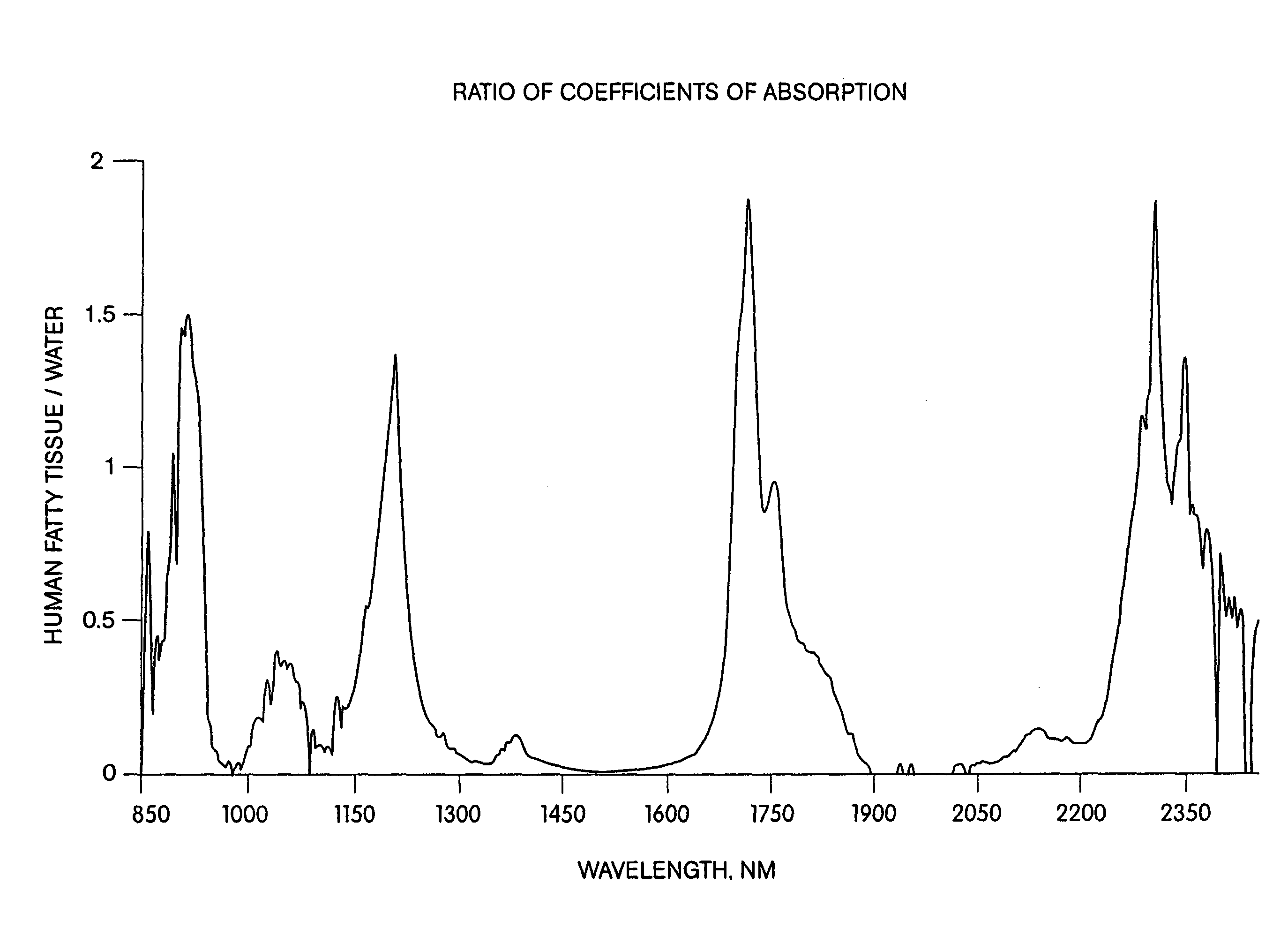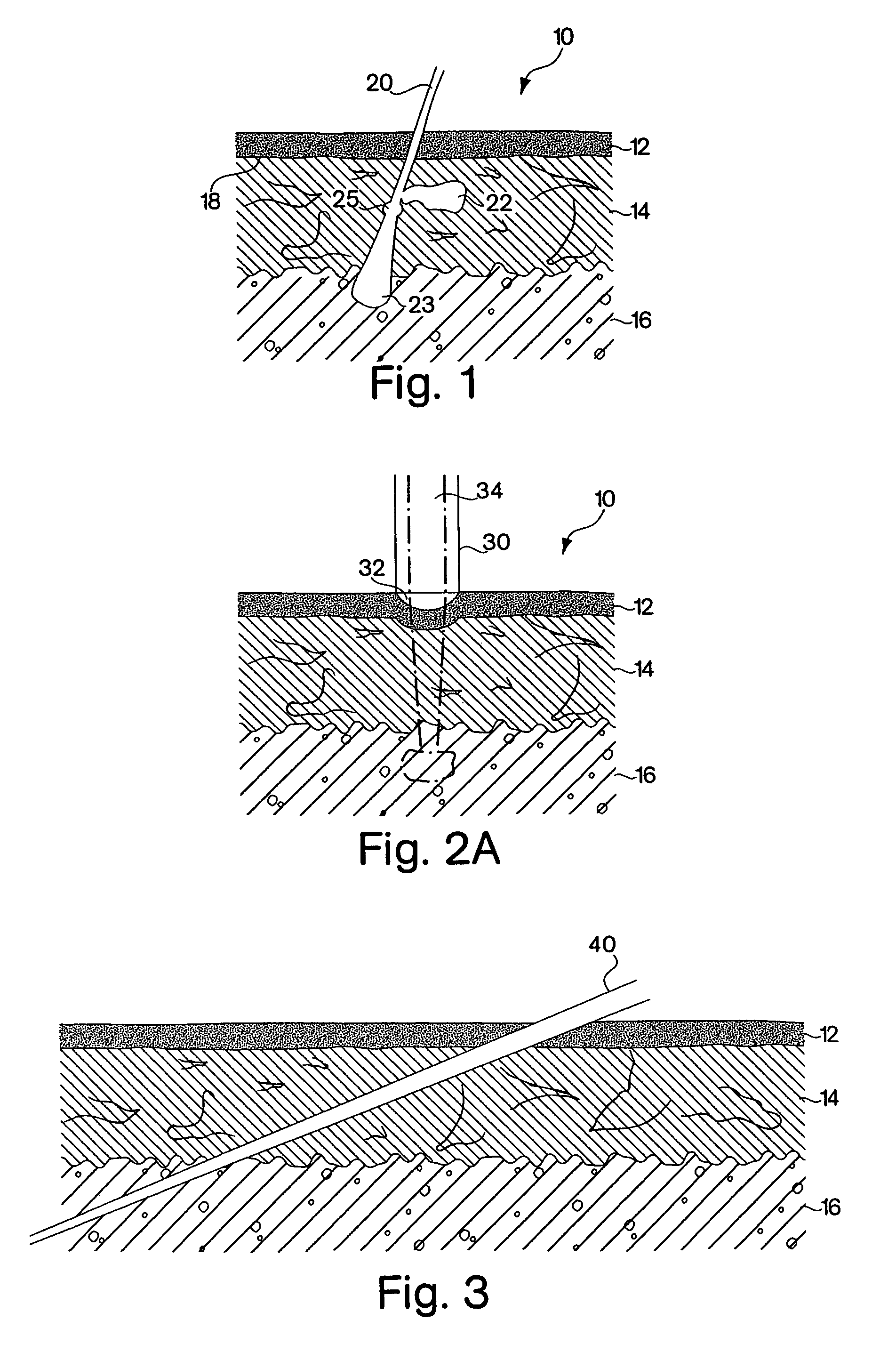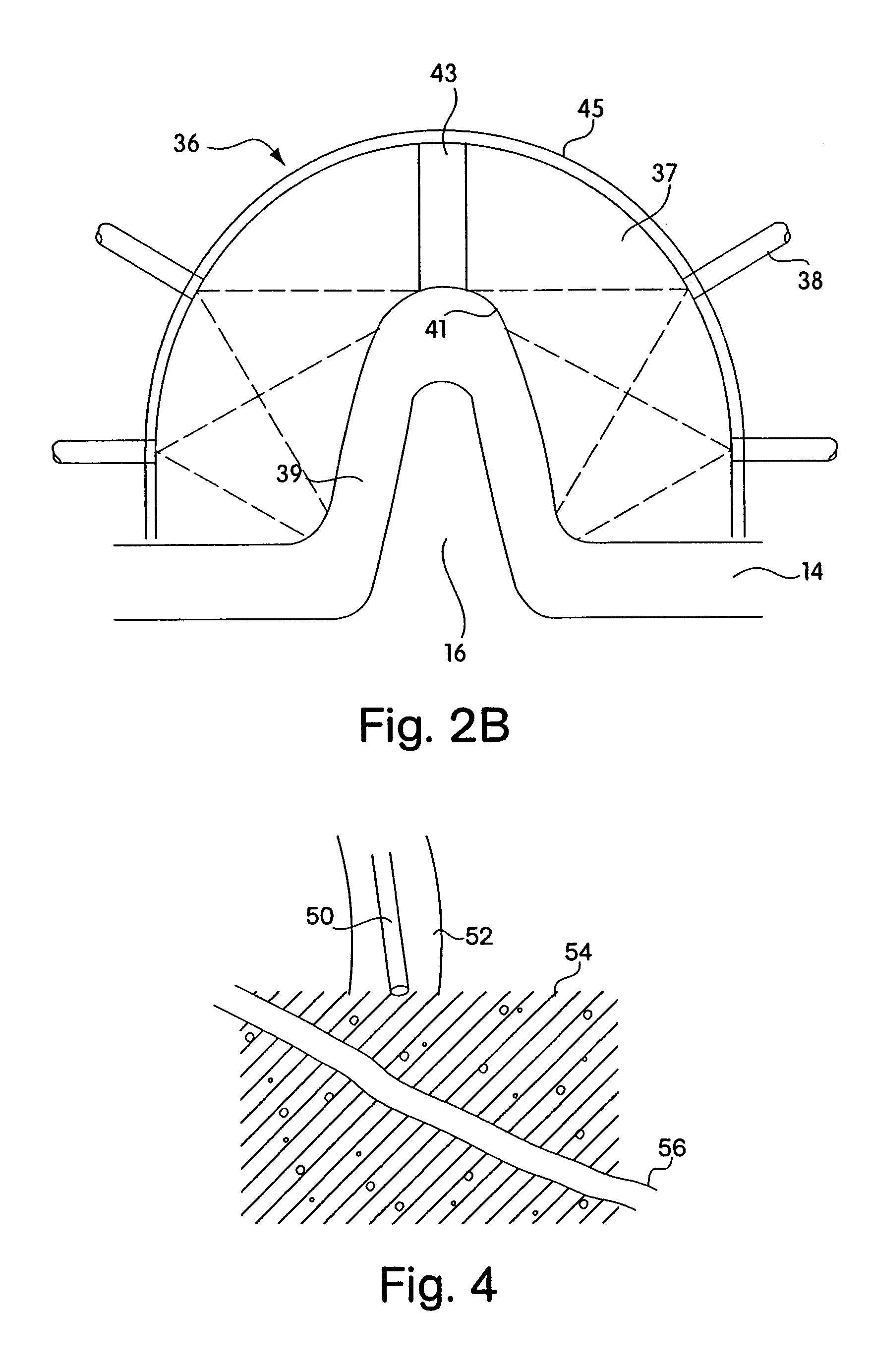Method and apparatus for the selective targeting of lipid-rich tissues
a technology of lipid-rich tissues and heating methods, applied in the field of methods and apparatus for selective heating of lipid-rich tissues, can solve problems such as difficulty in getting sufficient energy deep into fa
- Summary
- Abstract
- Description
- Claims
- Application Information
AI Technical Summary
Benefits of technology
Problems solved by technology
Method used
Image
Examples
Embodiment Construction
[0026]FIG. 1 is a simplified sectional view through a piece of human skin 10 illustrating the 30 major skin layers. The outermost layer is the epidermis 12 which overlies the dermis 14. Under the dermis is a layer of subcutaneous fat 16. The epidermis is typically relatively thin, on the order of 0.1 mm, although this thickness varies for different parts of the body, with the lower portions of the epidermis near the DE junction 18 containing quantities of melanin which vary with the pigmentation of the individuals skin. The thickness of dermis layer 14 varies from approximately 1 to 5 mm depending on the part of the body and on the individual, and may be thicker in some instances. The lower third of the dermis typically contains numerous lobules of fat. Subcutaneous fat 16, which may be several centimeters thick, therefore generally starts at a depth of a little less than 1 mm to approximately 4 mm from the skin surface.
[0027]FIG. 1 also illustrates a single hair follicle 20 with an...
PUM
 Login to View More
Login to View More Abstract
Description
Claims
Application Information
 Login to View More
Login to View More - R&D
- Intellectual Property
- Life Sciences
- Materials
- Tech Scout
- Unparalleled Data Quality
- Higher Quality Content
- 60% Fewer Hallucinations
Browse by: Latest US Patents, China's latest patents, Technical Efficacy Thesaurus, Application Domain, Technology Topic, Popular Technical Reports.
© 2025 PatSnap. All rights reserved.Legal|Privacy policy|Modern Slavery Act Transparency Statement|Sitemap|About US| Contact US: help@patsnap.com



